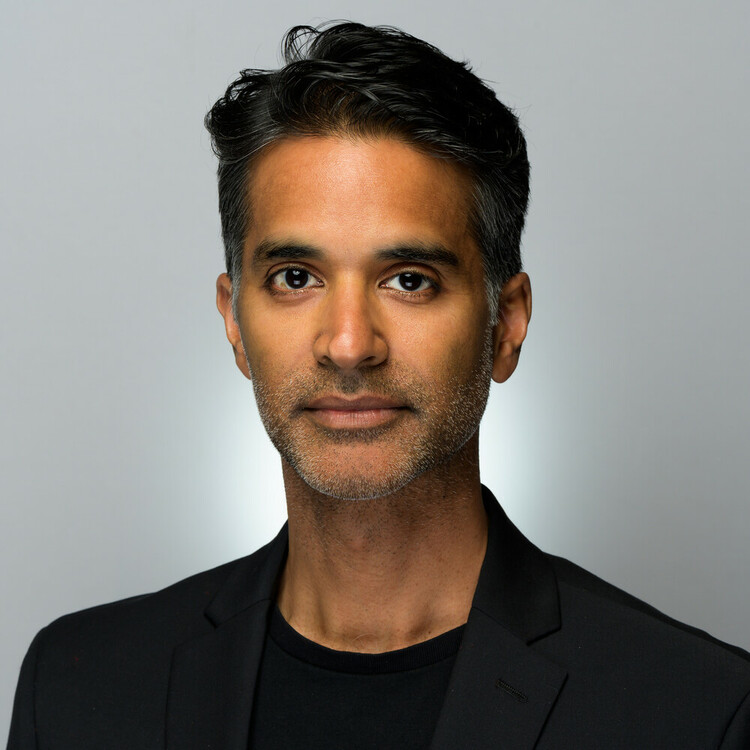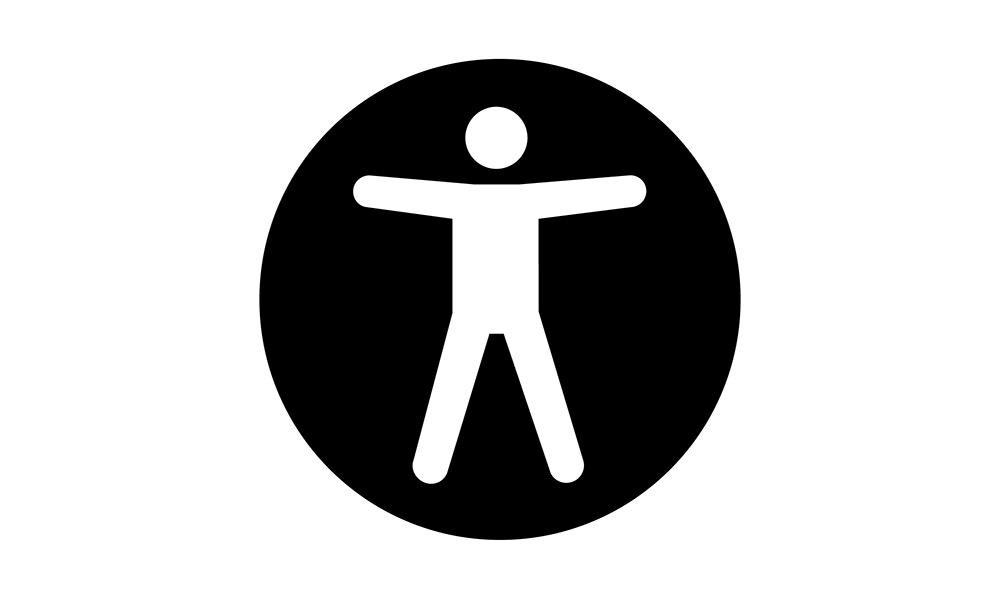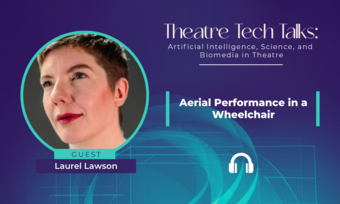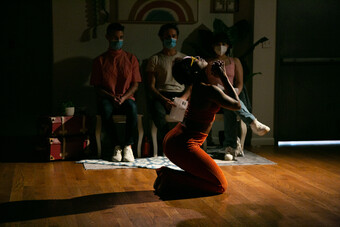Creating Our Arts Community’s Culture
Unfortunately these laws are not enough to change our culture and our actions. In the arts field, accessible websites are far from the norm, and enforcement of these laws and the encouragement and knowledge of how to comply to web accessibility standards appears to be rare. The primary way these laws would be enforced in the United States is citizen-led—by someone filing a complaint with the US Department of Justice. Filing a complaint is relatively easy to do (as it should be) and could eventually lead to an organization prioritizing accessibility and/or receiving a significant fine.
Enforcing the laws ourselves shouldn’t be the solution, though. Our challenge at the moment is the opposite: we need to develop a positive, field-wide passion to include everyone in our arts activity, and to educate people that disability is a form of diversity. The World Health Organization estimates that 15 percent of the world’s population lives with a disability.
Our challenge at the moment is the opposite: we need to develop a positive, field-wide passion to include everyone in our arts activity, and to educate people that disability is a form of diversity.
In order to change our culture, specifically around web accessibility, we need two major things:
- We need our government funders (and our private philanthropic foundations in the United States) to take stronger roles in holding funded organizations accountable, to challenge us to make our web communications and programming accessible, and to prioritize offering the necessary financial resources to make this happen.
- We need more education and awareness of the unconscious discrimination against a whole category of people, which we create in our everyday operations as culture makers. This education is not just for the arts managers and practitioners, but also for the firms and the people we hire and work with to build and design our websites.
Compliance Is Not the Same Thing as Inclusion
In HowlRound’s website development process, we aimed to be compliant with the W3C’s Web Content Accessibility Guidelines (WCAG) 2.1 at the AA level, which is the international legal standard. These guidelines provide a satisfactory level to accommodate a wider range of people with disabilities, including people who are blind or have low vision; are Deaf or have hearing loss; have brain-based, mobility, or speech disabilities; have photosensitivity; or have more than one disability.
We learned through our work with several web developers that achieving compliance with WCAG 2.1 is not exactly self-explanatory, nor is it something that any professional web developer knows how to do well from the start. There is a great amount of documentation and testing tools available to guide web developers; however, successful design and implementation requires an additional expertise, specialization, and willingness to work within specific design constraints.
Our biggest lesson, however, was learning that simply complying to technical standards is not the same thing as true inclusion. We can’t just check the box of compliance and think that the work is done. It is quite possible to make a website that technically passes all the accessibility tests but that still is terribly difficult for a person to use.
If you are striving for design that’s inclusive, the key to developing an accessible website is to test, redesign, and test again in an iterative manner with a wide variety of people with various disabilities. Including expert users with disabilities as part of the development process is the most effective way to know if the website you are making works for the most number of people. This act requires decentering your own tastes and conception of what good design is, and those of your designer, and shifting your worldview to see users with disabilities as the actual experts in what makes a well-designed website. If you can design for people with disabilities, you are designing for everyone. If your site is easy for people with various disabilities, then it’s going to be even easier for everyone.
A great primer for understanding the most common barriers people with disabilities face when navigating websites can be found in the article “Accessibility according to actual people with disabilities” by the Sweden-based Axess Lab.
Including expert users with disabilities as part of the development process is the most effective way to know if the website you are making works for the most number of people.
Institute for Human Centered Design
HowlRound’s accessibility instructors and user-testing consultants are from the Institute for Human Centered Design, a nonprofit organization based in Boston, Massachusetts, committed to advancing the role of all design in expanding opportunities and enhancing experiences for people of all ages, abilities, and cultures.
The Institute worked closely with our staff to train us in accessibility for digital communications, and they worked closely with our web developers, Giant Rabbit, to review the website from the initial graphic design and architecture to the final version prior to launch. We had a total of nine expert users for three different testing reviews at the beginning, middle, and end of the design and development process. The users ranged in age from twenty-three to eighty-four. Here are descriptions of some them:
- A medical-school student who was active in her high school and undergrad drama department. She has severe dyslexia and relies heavily on visual/spatial learning, text-to-speech, and a Chrome plugin that provides ruler lines that follow her cursor.
- A high-functioning young male who is on the autism spectrum and has ADHD. He does not use assistive technology but prefers to digest the web via an iPad. (This test was on an iPad.)
- A blind male who is actively engaged in the cultural sector. He uses a JAWS 19 screen reader on a Windows PC and Firefox browser.
- A person from the Deaf and hard of hearing community who is a low-vision ZoomText user.
- A worker at an association for the blind. She likes theatre and often goes to see plays. She experiences some mobility and learning limitations as a result of a traumatic brain injury.
- An industrial designer who consults for startups around strategy and social media. She has dyslexia and ADHD.
The Daily Work of Inclusion for Media Publishing
HowlRound’s website coding and design has been tested by automated tools and by expert users. However, several aspects of our daily media publishing require an ongoing effort, since we are continuously adding new content to the website and have an archive of thousands images, video, and audio that could be made more accessible if the HowlRound community requests it.
As of today, all of our images—past, present, and future—have alternative text. Going through the backlog of images within essays was a large task for our staff, but one that was realitively easy to do. With many hours, days, and months of dedication, we have been able to add alt-text for all images. The Axess Lab article “Alt-texts: The Ultimate Guide” can help you get started today.
On top of that, a selection of our video archive hosted on YouTube has human-made closed captioning. When organizations produce live content for HowlRound TV, we encourage them to think about what accessibility services they can provide that’s within their budget. The most accessible live events will have live captions, and then, at an even higher level of accessibility, sign language interpretation. At a minimum, closed captions on the archival video—written by humans, not software—is a good compromise if the budget is low. Our ultimate goal is to help organizations develop the financial resources and the habit to make their livestreams and recorded video accessible as a matter of standard practice.
Finally, a selection of our podcasts has written transcripts, and all future podcasts will have transcripts.
Community Participation in Accessibility
Because our video archive includes thousands of clips, it is not feasible for us to provide human-written closed captions on all of them and all at once due to budget limitations. However, we are committed and thrilled to provide accessibility on any piece of content that our community requests from us. In most cases we will be able to fulfill the request for captions or transcripts within two or three days—you can email [email protected] to make a request.
We hope HowlRound’s efforts will continue to be a continuous dialogue with our community and that web accessibility becomes common practice. Let us know how we can help, and how we can improve.











Comments
The article is just the start of the conversation—we want to know what you think about this subject, too! HowlRound is a space for knowledge-sharing, and we welcome spirited, thoughtful, and on-topic dialogue. Find our full comments policy here